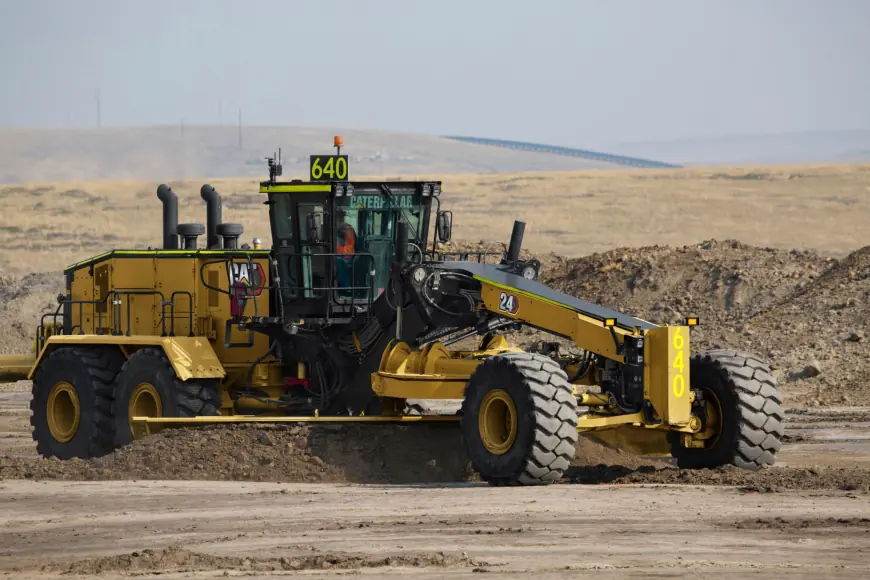Smart Tech Simplifies Motor Grader Operations
Integration of advanced technology and smart tools in Motor Grader eases the operational process of workers.

Motor graders have long been an essential part of the heavy equipment in the construction process. The demand for the motor grader has increased over the last few years due to its versatility. Advanced motor grader has the potential to meet the modern demands and challenges. It has also the ability to meet tight tolerances.
Motor grader are capable of performing multiple jobs, whether finishing the road grade or tackling large-scale earthworks, their precision is indispensable. These machines are being transformed, the skills gap is being closed, and precision is being raised to new levels by contemporary developments in smart technologies, such as automation and machine control systems.
Technological shifts in the construction industry are no mystery now; it is adapted and in a more inclusive manner. It is utilized in a broad way in the industry; it employs not only the construction process but also every step in the machine production and operational processes.
The Versatility of Motor Graders
In urban fleets and the construction industry, motor graders are multifunctional tools. Their responsibilities include anything from material windrowing and bulk dirt transportation to the fine grading needed for final road finishing. Although they need a great deal of skill to operate to their maximum extent, their versatility guarantees that they will always be an essential component of the contractor sphere. The utilization of the motor grader has been witnessed as a productive tool in various sectors of the construction sector.
Maintaining the accurate results graders are known for has become difficult due to the present lack of competent operators. The lack of skilled labor is still a persistent issue in the industry. However, smart and advanced technology is taking over, enabling operators with varying degrees of skill to provide the same excellent outcomes.
Managing Skills Gap with Automation
As construction is currently experiencing a lack of operators, industries are searching for ways to keep efficiency and accuracy. John Deere’s Matt Goedert supports that by utilizing smart technologies, contractors are able to manage these difficulties.
As for the machine, incorporating technology into it and still achieving tight accuracies does not require a 30-year veteran to operate it in the cab; this gives the contractor a lot of freedom.
John Deere is well-known as a company that almost experienced tech-savvy features. John Deere 770G Motor Grader is a machine incorporated with smart technology. The machine’s SmartGrade is an example of how automation is revolutionizing grader operations. Given that it is mastless, this fully integrated 3D grade control system allows for accurate adjustments without the need for bulky equipment. Even on intricate tasks, sensors installed in the cab cooperate with GPS, local positioning systems (LPS), or Topcon's Millimeter GPS to produce findings with precise tolerances.
Streamlining Complex Operations
Motor graders are considered complicated machines. In most cases, the operator prefers to handle and wants to manage the other machines instead of the motor grader. It requires a highly skilled and professional operator due to the machine's precision. However, automation is simplifying their operation, making them easier to handle in modern times, and making them accessible and less complicated for operators. Technologies integrated into modern graders, like those on John Deere machines, reduce complexity and enhance usability while maintaining high levels of efficiency and accuracy.
For example, Machine Damage Avoidance keeps expensive accidents at bay by limiting the movement of hydraulic cylinders to keep the moldboard away from fragile components like tires and steps.
Blade Flip, another modern invention, saves time by automating the blade rotation procedure during windrowing, doing away with the need for manual adjustments.
Furthermore, with little operator input, Auto Pass optimizes end-of-pass operations by automatically raising the blade, shedding material, and aligning it for the subsequent pass.
Enhanced Precision with Smart Features
Using technology in the construction procedures is not a big deal now. The thing that matters the most is how you utilizing in a smart way. Do you know its potential to increase the enhancement of the project or are you using the technology for the sake of technology and advancement? Although it seems complex, it is to some extent but if you understand the functionality of the smart features and adapt them in a construction process in a different strategic way. You can definitely enhance the project’s productivity.
Deere has already incorporated smart innovative ideas and features in the construction industry. The wear components often found on grader circles are eliminated by this sealed bearing and pinion arrangement.
To ensure accuracy with traditional circles, worn inserts need to be adjusted on a regular basis. On the other hand, the premium circle only needs to be grubbed once every 500 hours, which lowers maintenance expenses and downtime.
Accessible Future for Motor Graders
Advanced technology and smart features work as a bridge between skilled and untrained or new workers. To make sure that motor graders continue to deliver the precision they’re well-known for. Automation and several other modern-day tools help operations to be less complicated and increase productivity.
Smart telematics, robust physical designs, and innovative applications are all being combined by manufacturers such as John Deere to redefine what motor graders can do. In addition to reducing operator strain, these developments guarantee graders' continued importance in earthmoving fleets for many years to come.

 jackmark89
jackmark89 










